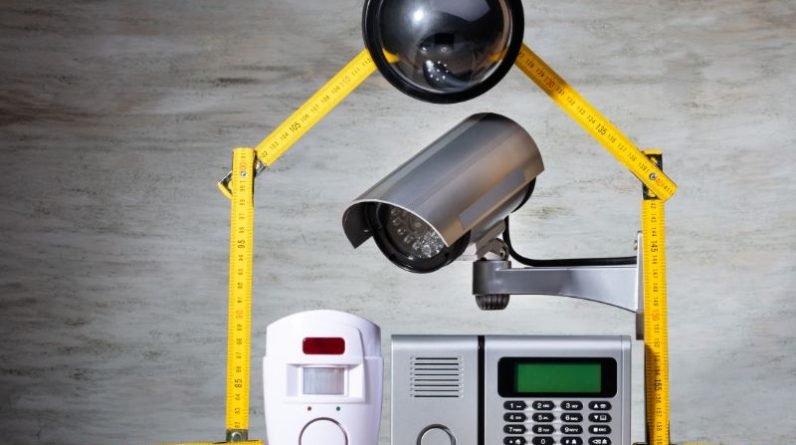
In the era of technological advancements, smart appliances have emerged as symbols of convenience and efficiency. However, behind this facade of innovation lies a dark side that warrants rigorous examination.
This article delves into the potential vulnerabilities in smart appliances within home networks, highlighting the risks they pose to personal privacy and the broader cybersecurity landscape. By employing meticulous analysis and technical scrutiny, this study aims to shed light on the exploitation threats associated with these devices while offering insights on safeguarding strategies for an audience seeking freedom from such perils.
Key Takeaways
– Smart appliances can be vulnerable to cyberattacks due to weak passwords, unpatched software, and insecure communication protocols.
– Breaches in smart appliances can lead to unauthorized access, privacy invasion, and even physical harm.
– Privacy concerns arise from weak security measures and inadequate network configurations in smart appliances.
– Robust security measures such as encryption protocols, software updates, and strong authentication are necessary to mitigate the risk of data breaches and address surveillance concerns.
The Rise of Smart Appliances
The rise of smart appliances has been observed as a prevailing trend in modern households. These appliances, equipped with advanced technologies and internet connectivity, have the potential to revolutionize the way we interact with our home environment.
One significant impact of smart appliances is their ability to optimize energy consumption. By incorporating sensors and intelligent algorithms, these appliances can automatically adjust settings and operate more efficiently, resulting in reduced energy wastage.
Additionally, smart appliances are designed to seamlessly integrate with virtual assistants such as Amazon Alexa or Google Assistant. This integration allows users to control their appliances through voice commands, providing a convenient and hands-free experience.
The combination of energy efficiency and virtual assistant integration makes smart appliances an attractive option for individuals seeking freedom from manual operations while also reducing their environmental footprint.
Vulnerabilities in Smart Home Networks
Vulnerabilities within home networks of connected devices have been extensively investigated in order to understand and address potential security threats. The rise of smart home automation has led to an increased reliance on interconnected devices, making IoT security a critical concern.
Various studies have revealed that smart appliances can become entry points for cyberattacks, exploiting weaknesses in the network infrastructure or inadequate security measures. These vulnerabilities may include weak passwords, unpatched software, or insecure communication protocols.
The potential consequences of such breaches range from unauthorized access to personal data and privacy invasion to physical harm or damage to property. Addressing these vulnerabilities requires implementing robust security measures such as encryption protocols, regular software updates, strong authentication mechanisms, and secure network configurations.
Continuous research and development are essential to ensure the protection and resilience of smart home networks against evolving threats in the ever-expanding landscape of IoT devices.
Potential Risks to Personal Privacy
Privacy concerns arise from the interconnected nature of smart home networks. Personal data can be accessed or compromised due to weak security measures and inadequate network configurations. Data breaches are a major worry in this context. Hackers can exploit vulnerabilities in smart appliances to gain unauthorized access to sensitive information.
The potential for surveillance concerns is another issue that arises from the interconnectivity of these devices. Smart home systems often collect large amounts of data about their users’ activities and preferences. This data can be exploited for various purposes without proper safeguards in place. It includes monitoring individuals’ behaviors and habits within their own homes, raising serious questions about privacy rights.
To ensure freedom and protect personal privacy, it is crucial for manufacturers and network providers to prioritize robust security measures. These measures should mitigate the risk of data breaches and address surveillance concerns.
Cybersecurity Threats and Exploits
Cybersecurity threats and exploits in smart home networks pose significant risks to the confidentiality, integrity, and availability of personal data.
As smart appliances become more prevalent in our homes, they have the potential to expose consumers to various cybersecurity breaches. These breaches can result in unauthorized access to personal information, financial loss, or even physical harm.
The impact on consumer trust cannot be understated. When individuals feel that their privacy is compromised or their personal data is at risk, it erodes their confidence in the technology and its providers. This can lead to hesitancy in adopting new smart devices or disengaging from existing ones.
To maintain consumer trust, it is crucial for manufacturers and service providers to prioritize cybersecurity measures and proactively address vulnerabilities within smart home networks.
Safeguarding Your Smart Appliances
To ensure the safety and reliability of electronic devices in homes, it is essential for individuals to implement effective security measures that protect against unauthorized access and potential risks.
With the increasing popularity of smart appliances, improving security measures has become a pressing concern. One important aspect of enhancing security lies in the implementation of robust encryption protocols. Encryption serves as a safeguard by converting sensitive information into an unreadable format, making it difficult for hackers to intercept or manipulate data. By employing strong encryption algorithms and adhering to industry standards, individuals can significantly reduce the risk of unauthorized access to their smart appliances and personal information.
Additionally, regular updates and patches should be applied to fix any vulnerabilities that may arise over time.
Implementing these security measures is crucial for ensuring the protection and privacy of users’ smart appliances in today’s interconnected world.
Frequently Asked Questions (FAQs)
How Do Smart Appliances Communicate With Each Other Within a Smart Home Network?
Interoperability challenges arise in the communication between smart appliances within a smart home network. Security protocols must be implemented to ensure the integrity and privacy of data exchanged between these devices.
Can Smart Appliances Be Hacked Remotely, or Does the Attacker Need Physical Access to the Appliance?
The vulnerability of smart appliances to remote hacking and the necessity of physical access for an attacker are topics of interest. Potential security measures and adherence to IoT security standards can mitigate such risks.
Are There Any Known Instances of Personal Data Breaches Resulting From Vulnerabilities in Smart Appliances?
Instances of personal data breaches resulting from vulnerabilities in smart appliances have been documented. These breaches highlight potential security risks and emphasize the importance of protecting personal information when using such devices.
What Are Some Common Cybersecurity Threats That Smart Appliances Are Vulnerable To?
Common security measures are essential in protecting smart appliances from various cybersecurity threats. These threats include malware attacks, unauthorized access to personal data, and remote control manipulation by hackers seeking to exploit vulnerabilities in the device’s software.
Is It Possible to Completely Eliminate the Risks Associated With Using Smart Appliances, or Are There Always Some Vulnerabilities Present?
Balancing convenience and security is a challenge in the realm of smart appliances. Exploring potential vulnerabilities and consequences is necessary to understand if complete elimination of risks associated with using smart appliances is feasible.
Conclusion
In conclusion, the growing popularity of smart appliances has brought about a new era of convenience in our daily lives.
However, this convenience comes at a cost – the dark side of vulnerability and potential hacks.
As we have explored in this article, smart home networks are susceptible to cyber threats and privacy breaches.
It is imperative that users remain vigilant and take necessary precautions to safeguard their smart appliances from malicious exploits.
Only through meticulous attention to cybersecurity can we truly enjoy the benefits of these technological advancements without falling victim to their drawbacks.







